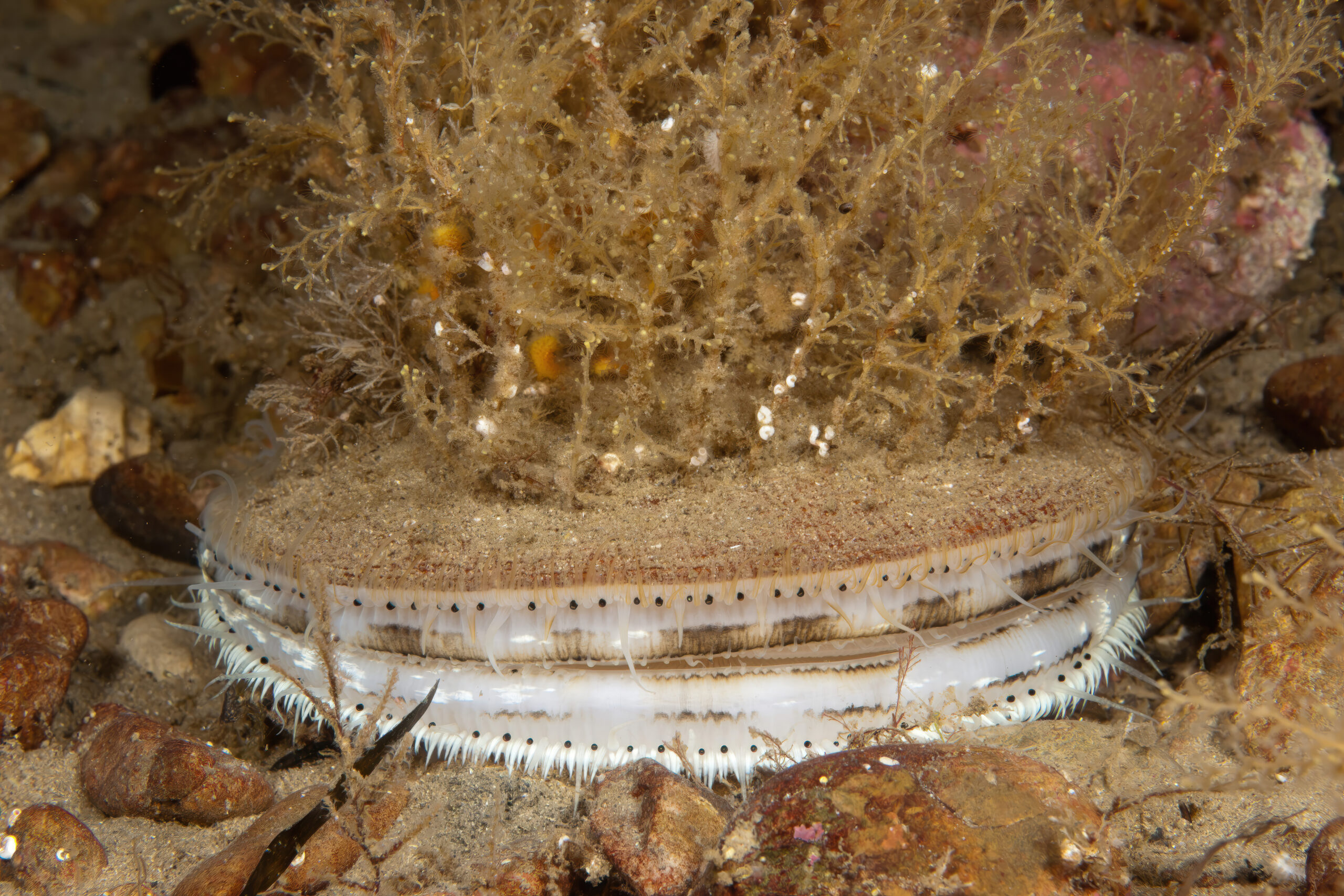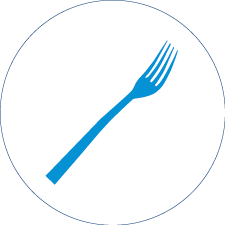
SIZE:
Up to 20 cm in diameter.
LIFE EXPECTANCY:
21 years.
LIFE CYCLE:
Deep sea scallops reproduce by an external fertilization of their eggs. Fertilization occurs between mid-July and the end of August, depending on the region. The scallop larvae develop over five weeks before settling to the sea bottom in the autumn. Scallop growth depends, more particularly, on water temperature, which varies between seasons and depths.
Individuals stick together to form “beds.” Although they tend to be sedentary, the deep sea scallop is one of the few mollusc species capable of moving around.

As a sedentary animal, it is not uncommon for other living organisms to take up residence on deep sea scallop shells.
Credit: Richard Larocque, photo taken in the Baie de Gaspé, at 25 m depth.
The upper valve is reddish brown; the lower shell is rather white. There are growth rings and grooves on the shell and a hinge where the two valves meet. The weight of the muscle varies over the year: heavier before reproduction, lighter when spawning in summer. The scallop has eyes and sensory tentacles.
On the seabed, down to 384 m depth.
It prefers gravel or sandy bottoms and lives in cold water.
Waters warmer than 20 to 23 °C can be deadly for scallops.
PREYS:
Plankton
PREDATORS:
Lobsters
Crabs
Sea stars
Bottom fish
MACHINES:
Digby-type dredge or New Bedford-type dredge, mariculture.
REGULATIONS:
- Minimum size of 100 mm
- Quota
- Fishing season specified by zone
Commercial deep sea scallop fishing has existed since 1960 in Québec. It often complements another type of fishing. Mariculture developed during the 1980s.
Recreational fishing permits are available in autumn for divers who wish to harvest a few scallops. Pick-your-own is prohibited.
Deep sea scallop is a Smarter seafood-listed species.
BENEFITS:
Rich in protein, low in fat, a good source of omega-3 fatty acids and minerals, as well as vitamin B12, which is good for the proper functioning of the nervous system.
LET’S COOK:
Firm, yet melt-in-the-mouth texture. Lean flesh. The adductor muscle, also known as the meat, and the coral or “roe” are edible. In a fresh scallop, the meat can be eaten raw. They are also delicious browned in a pan.
NOS CONSEILS CULINAIRES:
- When purchasing :
- To verify that the scallop is alive, tap lightly on its shell. It should retract.
- Without the shell, the meat should be shiny and flexible with a pale pink-orange colour.
- Frozen, it is preferable that the packaging be free of any frost and that it be tightly sealed. If phosphate salt treatment is mentioned, be aware that the scallops will lose much of their water when cooking.
- Preparation :
- It is important to remove the membrane and digestive system before cooking.
- If overcooked, the meat will be tough and rubbery.
- It is best to add to soups and slow-cooked dishes at the end of cooking time.
- Do not microwave scallops… They might explode.
- After removing the meat from the shell, rinse under fresh water and blot with a paper towel.
- Scallops are naturally salty. It is preferable to avoid using salt with the seasonings.

The pinkish meat and orange coral are the two edible parts of the scallop.
Credit: Yury Kirienko, photo taken in 2011.






